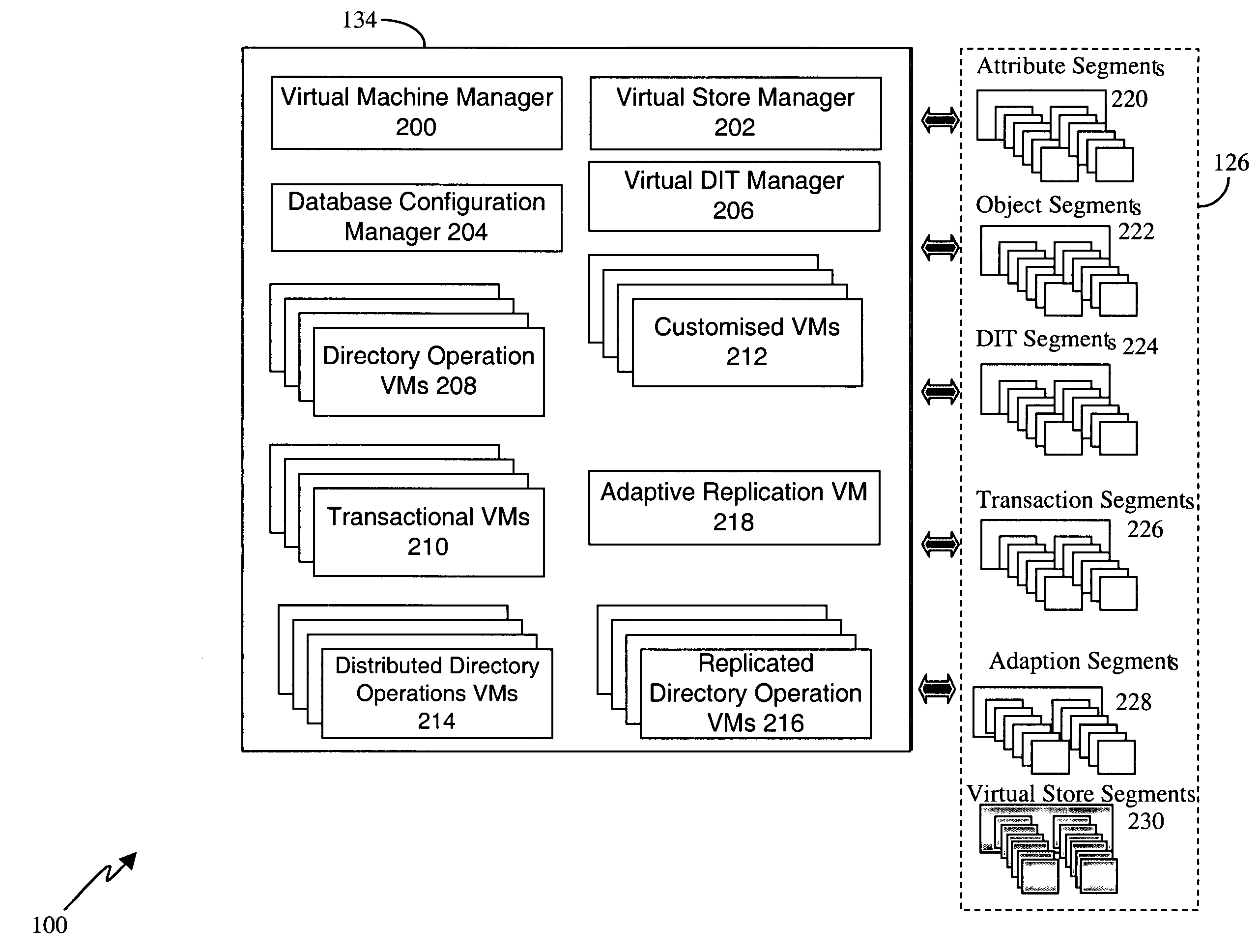Directory system
a directory system and directory technology, applied in the field of directory systems, can solve the problems of significant drawbacks of sql-based database products, performance cost, and inability to guarantee performance, and achieve the effect of improving the performance of said directory services
- Summary
- Abstract
- Description
- Claims
- Application Information
AI Technical Summary
Benefits of technology
Problems solved by technology
Method used
Image
Examples
Embodiment Construction
[0034]In a directory, the term ‘relative distinguished name’ (RDN) refers to the name of an attribute type-value pair at one level within the directory hierarchy, whereas the term ‘distinguished name’ (DN) refers to the sequence of RDNs from the root of the hierarchy to a specific entry and provides the unique name by which that entry can be identified. The term ‘content prefix distinguished name’ refers to the DN of the highest entry in a portion of a directory tree, for example, where that tree is a subordinate branch of a larger hierarchy.
[0035]The Context Prefix of a directory (DIT) namespace is the namespace of other directory entries in other directory systems that are superior in name space to this DIT. For example, if the context prefix of a DIT is {c=US, o=govt, ou=defense, ou=army}, then the entries of this prefix are in one or more other interconnected superior—distributed directories. The “Naming Context” of a DIT indicates the DIT's name space responsibility (i.e., what...
PUM
 Login to View More
Login to View More Abstract
Description
Claims
Application Information
 Login to View More
Login to View More - R&D
- Intellectual Property
- Life Sciences
- Materials
- Tech Scout
- Unparalleled Data Quality
- Higher Quality Content
- 60% Fewer Hallucinations
Browse by: Latest US Patents, China's latest patents, Technical Efficacy Thesaurus, Application Domain, Technology Topic, Popular Technical Reports.
© 2025 PatSnap. All rights reserved.Legal|Privacy policy|Modern Slavery Act Transparency Statement|Sitemap|About US| Contact US: help@patsnap.com



